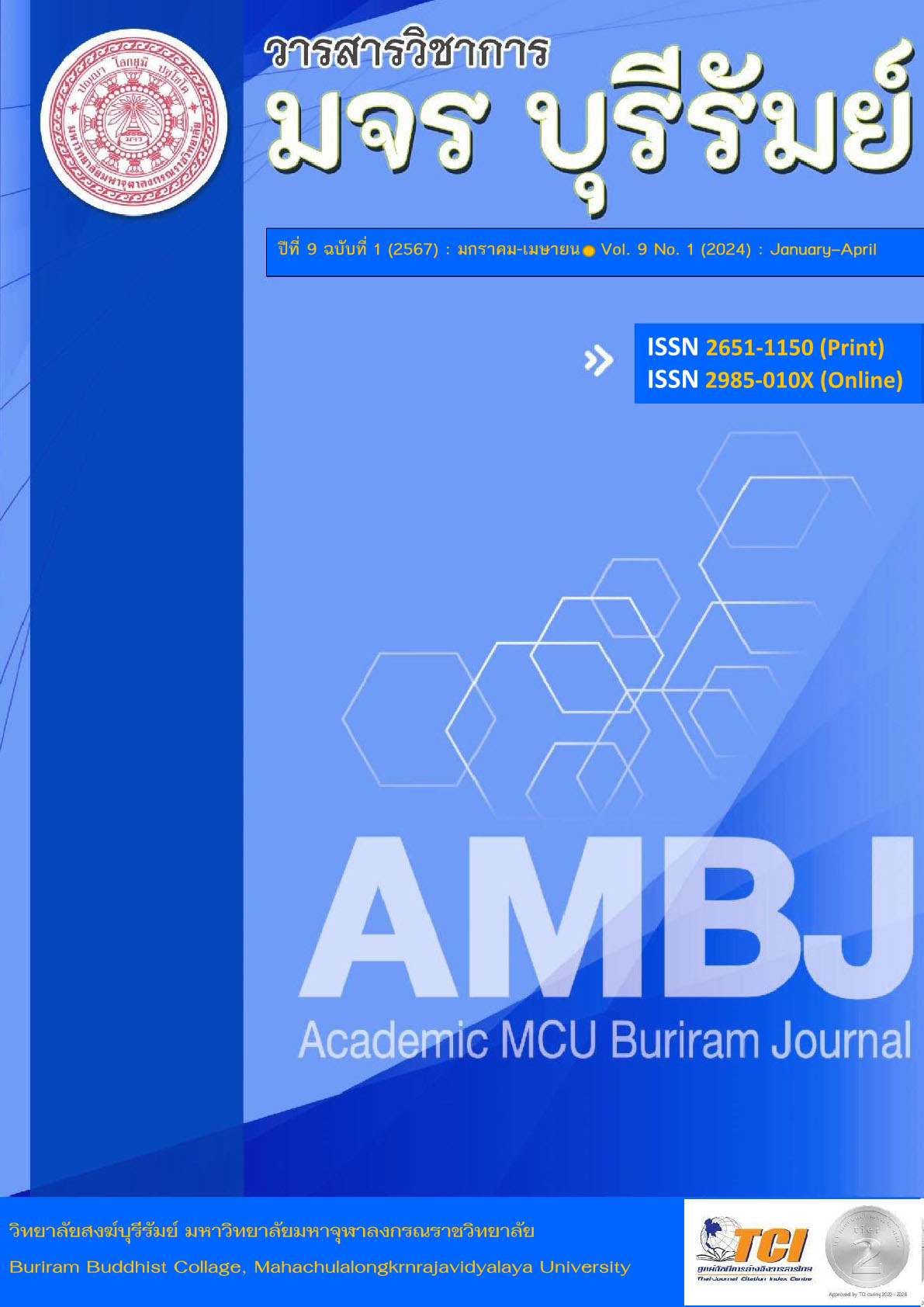Augmented Reality Technology to Promote Analytical Thinking Abilities
Keywords:
Augmented Reality Technology, Ability to Think AnalyticallyAbstract
The purpose of this article is to present the idea of augmented reality technology as a tool to promote analytical thinking ability in students. From the analysis results, it was found that at present, Thai society has developed and changed accordingly, especially the introduction of technology into the education of people in society that role in facilitating various aspects inevitably in particular, technology will help in understanding news in various areas according to the strategic plan. That involves creating media, media libraries, and digital learning resources or facilitating education to be faster, more accurate, and more accurate to support the changes in the world in the information technology era using augmented reality technology, also known as AR (Augmented Reality), is used in teaching and integrating learning management to develop analytical thinking abilities. Currently, augmented reality technology is being applied in a variety of educational fields in line with the development of essential skills in the 21st century and to promote self-learning the aim is for students to develop analytical thinking abilities. According to the principle of reason, it leads to the creation of wisdom.
Today is the information age where learners have access to modern technology. As a result, student learning is flexible, not limited to just one type of learning. therefore, augmented reality technology is a tool to promote analytical thinking ability in students.In this article will about Concept and origin of augmented reality technology implication of augmented reality technology Evolution of augmented reality technology Working principle of augmented reality technology elements of augmented reality technology application of augmented reality technology learning management with augmented reality technology using augmented reality technology, for the purpose of develop analytical thinking abilities.
References
ก้องเกียรติ หิรัญเกิด. (2557). Augmented Reality Open Source for Project. เล่มที่ 1. กรุงเทพมหาคร: Fast-Books.
นงคราญ ศรีสะอาด. (2556). การสร้างสภาพแวดล้อมทางการเรียนจากเทคโนโลยีความเป็นจริงเสริม โดยใช้กระบวนการสืบเสาะหาความรู้ เพื่อพัฒนาทักษะกระบวนการทางวิทยาศาสตร์เรื่อง ระบบสุริยะ สำหรับนักเรียนชั้นประถมศึกษาปีที่ 4. วิทยานิพนธ์ปริญญาครุศาสตร์อุตสาหกรรมมหาบัณฑิต สาขาวิชาเทคโนโลยีการเรียนรู้และสื่อสารมวลชน. ภาควิชาเทคโนโลยีและสื่อสารการศึกษา คณะครุศาสตร์ อุตสาหกรรมและเทคโนโลยี: มหาวิทยาลัยเทคโนโลยีพระจอมเกล้าธนบุรี.
ประหยัด จิระวรพงศ์. (2553). เทคโนโลยีผสานความจริงเสมือน. วารสารศึกษาศาสตร์มหาวิทยาลัยนเรศวร, 12(3), 189-194.
พนิดา ตันศิริ. (2560). โลกเสมือนผสานโลกจริง Augmented Reality. วารสารนักบริหารมหาวิทยาลัยกรุงเทพ, 30(2), 167-175.
มนตรี วงษ์สะพาน. (2556). การยกระดับการเรียนรู้ของนักเรียนด้วยกระบวนการคิดวิเคราะห์. วารสารคณะศึกษาศาสตร์ มหาวิทยาลัยทักษิณ, 13(2), 25-139.
วิวัฒน์ มีสุวรรณ์. (2558). การพัฒนาสื่อ Augmented Reality ด้วยโปรแกรม Processing และ OpenSpace3D. กรุงเทพมหานคร: สำนักพิมพ์แห่งจุฬาลงกรณ์มหาวิทยาลัย.
สุพจน์ พ่วงศิริ. (2559). การพัฒนาคู่มือความจริงเสริม เรื่อง การใช้เครื่องวัดปริมาณไขมันในร่างกาย สำหรับนิสิตสาขาวิชาสาธารณสุขศาสตร์ ชั้นปีที่ 1 คณะพลศึกษา มหาวิทยาลัยศรีนครินทรวิโรฒ. วิทยานิพนธ์ปริญญาศึกษาศาสตรมหาบัณฑิต สาขาวิชาเทคโนโลยีและสื่อสารการศึกษา. คณะครุศาสตร์อุตสาหกรรม: มหาวิทยาลัยเทคโนโลยีราชมงคลธัญบุรี.
อดิศักดิ์ มหาวรรณ. (2556). AR หรือ Augmented Reality. Retrieved form http://edu.techno-google.blogspot.com/2013/05/ar-augmented-reality.htm (Accessed 29 December 2023).
Ammar, H.S. et al. (2017). The effectiveness of using augmented reality apps in teaching the English Alphabet to kingdergarten children: A case study in the state of Kuwait. Eurasia Journal of Mathematics, Science & Teachnology Education, 13(2), 46.
Azuma, R.T. (2001). A Survey of Augmented Reality Presence: Teleoperators and Virtual Environments. Retrieved form http://www.cs.unc.edu/ azuma/ARpresence.pdf (Accessed 17 November 2023).
Azuma, R.T. (1997). A Survey of Augmentted Reality. Presence, 6(4), 355-385.
Gregory Kipper and Joseph Rampolla. (2013). Augmented reality: an emerging technologies guide to AR. Waltham: Syngress.
Kipper,G. (2013). Chapter 1-What Is Augmented Reality?. Augmented Reality. Journal of Physics, Boston: Syngress. (pp.1-27).
Downloads
Published
How to Cite
Issue
Section
License
Copyright (c) 2024 Academic MCU Buriram Journal

This work is licensed under a Creative Commons Attribution-NonCommercial-NoDerivatives 4.0 International License.
ทัศนะและความคิดเห็นที่ปรากฏในบทความวารสารฉบับนี้ถือเป็นความรับผิดชอบของผู้เขียนบทความนั้น ไม่ถือเป็นทัศนะและความรับผิดชอบของบรรณาธิการ





